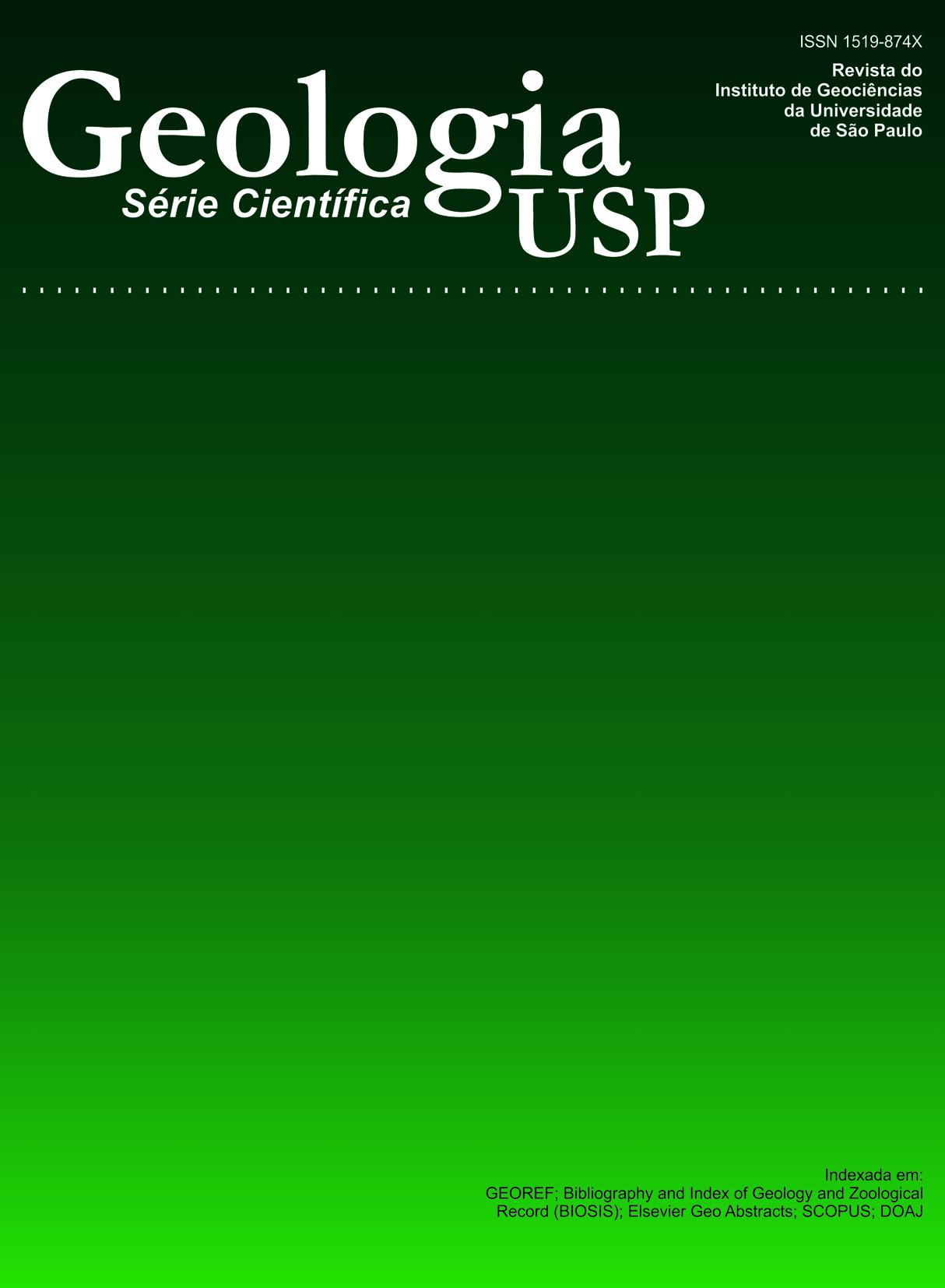In situ isotopic analyses of U and Pb in zircon by remotely operated SHRIMP II, and Hf by LA-ICP-MS: an example of dating and genetic evolution of zircon by 176Hf/177Hf from the Ita quarry in the Atuba Complex, SE Brazil
DOI:
https://doi.org/10.5327/Z1519-874x2009000300004Keywords:
Remotely-controlled SHRIMP II, Zircon dating, LA-ICP-MS, Hf isotopic composition, Atuba Complex, SE BrazilAbstract
Remotely-operated SHRIMP dating of zircon is an interesting alternative for dating of zircon crystals. Although it does not represent any technical progress of the geochronological method using the U-Pb system in zircon it is a very useful and cheap facility. The procedure was first used for mass spectrometric analyses involving two international laboratories in São Paulo, Brazil and Beijing, China. It was applied to samples of three gneiss-migmatitic rocks from the Ita quarry in the Atuba Complex (located between the Luis Alves and the Apiaí Domain) to test previous controversial hypotheses about its evolution. The presence of important archean and paleoproterozoic components in the complex is confirmed by analyses of zircon found in probably neoproterozoic leucosomes. Diorite intrusion also occurred during the neoproterozoic, associated with the 0.6Ga continental collisions involved in the assembly of Gondwana. The determination of Hf isotope ratios by LA-ICP/MS represents a new option for checking the relative importance of mantle (εHf >; 0) and crustal contributions (εHf < 0) during the growth of the zircon crystals. While the archean component in the complex was derived from the mantle (εHf +1.5 to +8.7) the paleoproterozoic component had a crustal contribution (εHf-9.1 to -10.1).Downloads
Download data is not yet available.
Downloads
Published
2009-10-01
Issue
Section
Articles
License
Authors who publish in this journal shall comply with the following terms:
- Authors keep their copyright and grant to Geologia USP: Série Científica the right of first publication, with the paper under the Creative Commons BY-NC-SA license (summary of the license: https://creativecommons.org/licenses/by-nc-sa/4.0 | full text of the license: https://creativecommons.org/licenses/by-nc-sa/4.0/legalcode) that allows the non-commercial sharing of the paper and granting the proper copyrights of the first publication in this journal.
- Authors are authorized to take additional contracts separately, for non-exclusive distribution of the version of the paper published in this journal (publish in institutional repository or as a book chapter), granting the proper copyrights of first publication in this journal.
- Authors are allowed and encouraged to publish and distribute their paper online (in institutional repositories or their personal page) at any point before or during the editorial process, since this can generate productive changes as well as increase the impact and citation of the published paper (See The effect of Open Access and downloads on citation impact).
How to Cite
Sato, K., Siga Jr, O., Silva, J. A. da, McReath, I., Dunyi, L., Iizuka, T., Rino, S., Hirata, T., Sproesser, W., & Basei, M. A. S. (2009). In situ isotopic analyses of U and Pb in zircon by remotely operated SHRIMP II, and Hf by LA-ICP-MS: an example of dating and genetic evolution of zircon by 176Hf/177Hf from the Ita quarry in the Atuba Complex, SE Brazil . Geologia USP. Série Científica, 9(3), 61-69. https://doi.org/10.5327/Z1519-874x2009000300004





